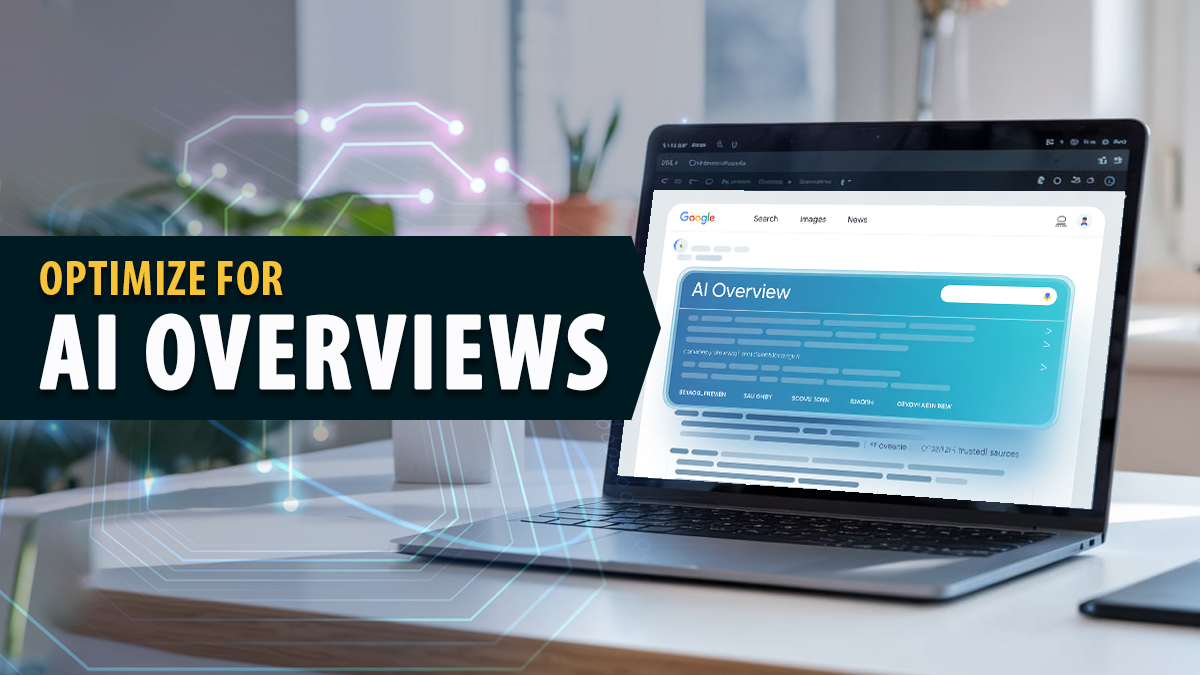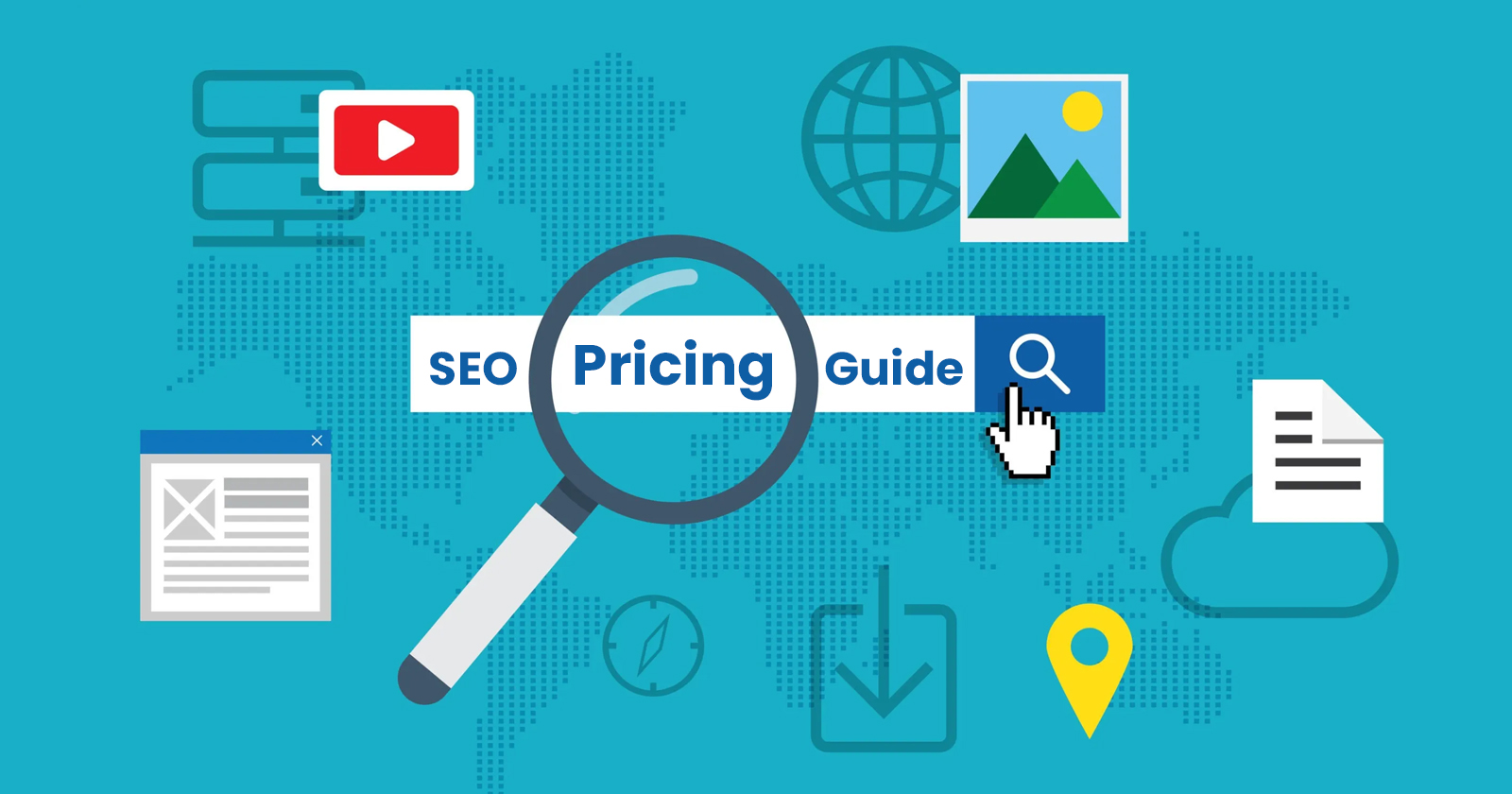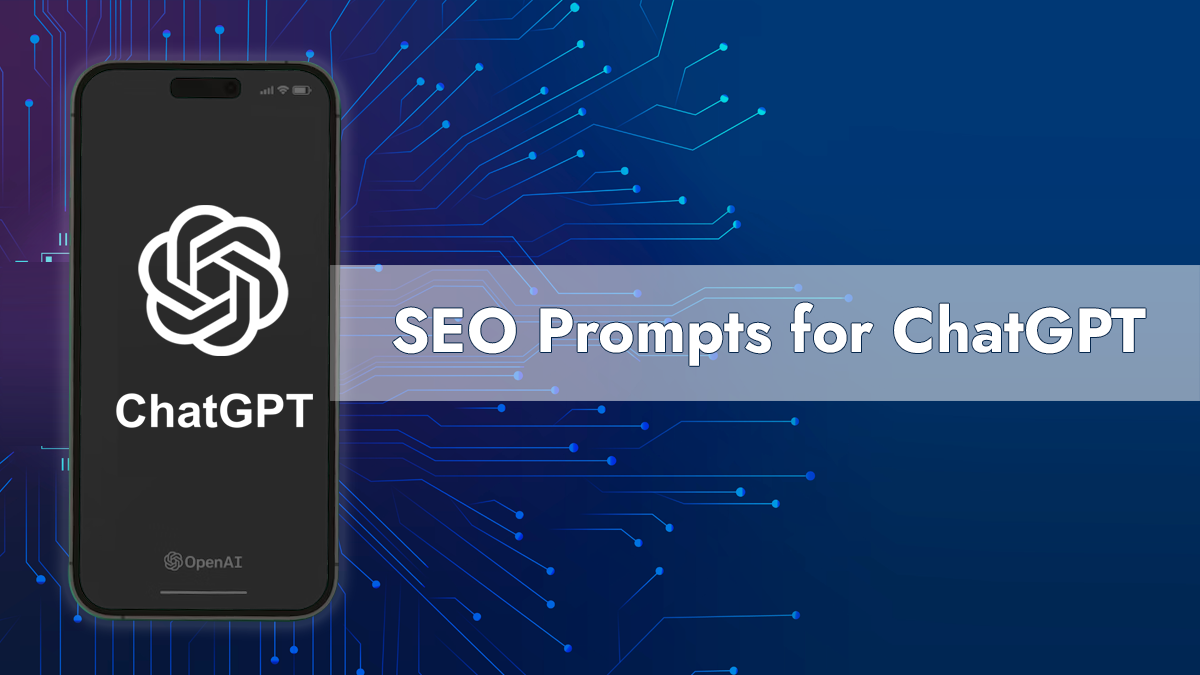As tools like ChatGPT, Gemini, and Claude change how people find and use information, content creators need to change their approaches to remain visible and competitive. Unlike regular search engines, generative AI systems focus more on how well the conversation makes sense.
It also focuses on how clear the information is, and using reliable sources instead of just looking for how often certain words are used or how many links are pointing to a page. This requires a new way to optimize for AI overviews, one that focuses on what users want, trustworthy content, and good technical quality.
If you’re a marketer, blogger, or business owner, it’s important to know how AI looks at, finds, and shows content. This will help make sure your content appears in answers, summaries, and suggestions.
Making the most of generative AI isn’t about tricking the system; it’s about keeping up with the improving standards of being accurate, easy to use, and understanding the context. In this post, we’ll look at important practices and common mistakes when optimizing for AI overviews.
Why Should Content Be AI-Friendly?
Generative AI (GAI) search is getting more popular, but it still has a long way to go before it can replace Google, which holds 89.74% of the search engine market. However, GAI search is becoming very popular very quickly.
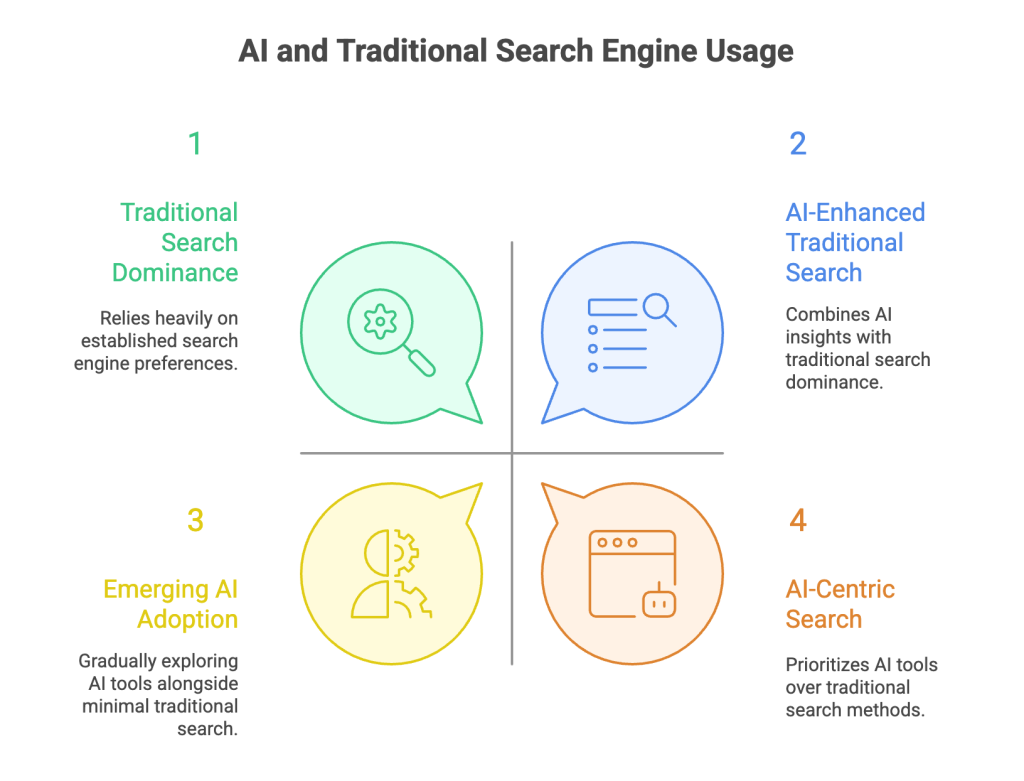
A recent survey by Higher Visibility found that 71.5% of people use AI tools to search for information, and 14% of them use these tools every day. Most people (79.8%) still like to use Bing and Google for regular searches, but many are also using AI tools to look things up online.
People who use Google will begin to see AI Summaries for many of their searches, and Bing has added Copilot to its results pages as well. The Copilot Answer is very similar to Google’s AI Overview, so improving your content for GAI is necessary now.
This is made worse because these AI answers show up first in search results. This means you’ll have to use good SEO strategies if you want your site to appear at the top of the search results. So, what do GAI tools think is important when picking online sources to use in their answers. The key factors are:
AI SEO services are essential for improving visibility in AI Overviews by optimizing content structure, aligning with search intent, and enhancing semantic relevance for generative search results.
Factors Affecting Ranking on Generative AI Tools
High Authority Ranking Well Content
Generative AI tools are more likely to use content from reliable and trusted sources. These are websites or platforms that have gained trust and respect over time by providing reliable and helpful information regularly.
AI models usually consider how much authority a website or source has when giving answers, thinking that more authority means the information is likely to be more accurate. Also, content from trusted sources is often shared on many websites, making it more noticeable in the data that AI tools learn from.
Creators who want to rank higher should try to publish on trusted websites or increase their own website’s trustworthiness by creating high-quality content that is well-researched and has good links from other sites. Using trustworthy sources makes it more likely that your information will be mentioned in answers created by AI.
Trustworthy Author Bios
Author credibility is very important for how generative AI tools judge and show content. Detailed author bios show that the writer knows a lot about the topic. These bios should have job qualifications, work history, important certifications, and links to other projects.
AI models that focus on recognizing expertise, authority, and trust are more likely to include or suggest content from highly qualified authors. This is especially important for YMYL (Your Money or Your Life) topics such as health, finance, or law, where having expert knowledge affects the safety and trust of readers.
Websites should always show who wrote their content and not use anonymous posts. Adding social proof, links to respected organizations, or quotes from trustworthy sources can help build trust and improve how well a content ranks in AI results.

Transparency and Regular Updates
Content that is clear and regularly updated usually ranks higher in generative AI results. Transparency involves being clear about where information comes from, the rules used for writing, when the content was published, and any changes made to it.
This helps AI tools check if the information is new and accurate, which is very important for topics that change quickly, like technology, medicine, or news. Updating content regularly keeps the information correct, follows new guidelines, and shows the latest knowledge.
AI systems that learn from online information might ignore or lower the value of old or unclear content, even if it used to be trustworthy. Being open and honest builds trust with users, and this is becoming more important for rankings as AI models try to mimic how users interact.
Adding timestamps, update notes, and change logs in articles helps AI systems focus on content that stays important and reliable over time. To remain noticeable in AI-generated content, publishers need to focus on being clear about their editing process and regularly updating their content.
Connecting to Sources from Top Level Domains
Linking to reliable websites, especially those with trusted endings like .gov, .edu, or .org, can greatly increase how credible a page seems to AI models. These TLDs are usually linked to official organizations, universities, and government websites.
By using these sources, the content shows that it cares about being correct and checking facts. Generative AI systems look at the context of a piece of content to check its quality. They usually give higher scores to content that includes trustworthy sources.
This also helps make sure the information is correct when finding or summarizing it. Adding links to trusted sources helps readers find more information and shows search engines that your content is reliable.
Using internal links along with good external links helps make the website’s structure and information organization better. It’s important to make sure that these references are relevant to the topic and cited correctly to help improve their effectiveness in AI rankings.
Content Found in APIs
Search engines regularly explore the internet to find new content that they can save and use for people’s searches. AI tools don’t do that. Instead, they quickly get up-to-date information from APIs. For example, ChatGPT uses Google’s Search API to get its search results.
Content that can be accessed using APIs is more likely to be displayed in AI responses. This is especially true for tools and platforms that need real-time data. APIs give organized, current, and easily adjustable information that can be accessed through programs.
This helps the AI system get the latest version of content. This is especially helpful for changing information like stock prices, weather, sports scores, or news. Also, the information in APIs is usually more organized and uniform, making it easier for AI models to understand and use the data.
Websites and services that share their information through public or partner APIs can get more attention and reach more people. Having clear and easy-to-use APIs makes it easier for people to find and trust your content in the world of generative AI.
The more you add these elements to your content, such as creating a public API, adding information about the authors, and enhancing your regular SEO, the more likely your work will show up in GAI answers and summaries.
Also Read: Unlocking the Future: A Guide to Search Generative Experience SEO
Easy Tips to Optimize for AI Overviews
Now that you understand why it’s important to boost your online presence using AI tools, let’s find out how to optimize for AI overviews. We will look at some tips to improve GAI search.
Write Brief and Easy-to-Read Answers
First, make it easy for AI tools to find quick answers to common questions asked by users in your content. How do you do that? The best approach is to provide a brief, easy-to-read answer to the main question of the post.
This makes it very easy for AI tools and search engines to discover. For example, imagine you looked up some keywords and found out that many people are searching for the question “How to outsource SEO?”
Next, you create a plan for a blog called “How to Outsource SEO? Tips to Find the Right SEO Agency in 2025”. Next, you explain what SEO outsourcing is in the first two lines of the post.
Now, AI tools and crawlers know exactly what SEO outsourcing is. As a bonus, it is at the very top of the post, which makes it easier to notice.
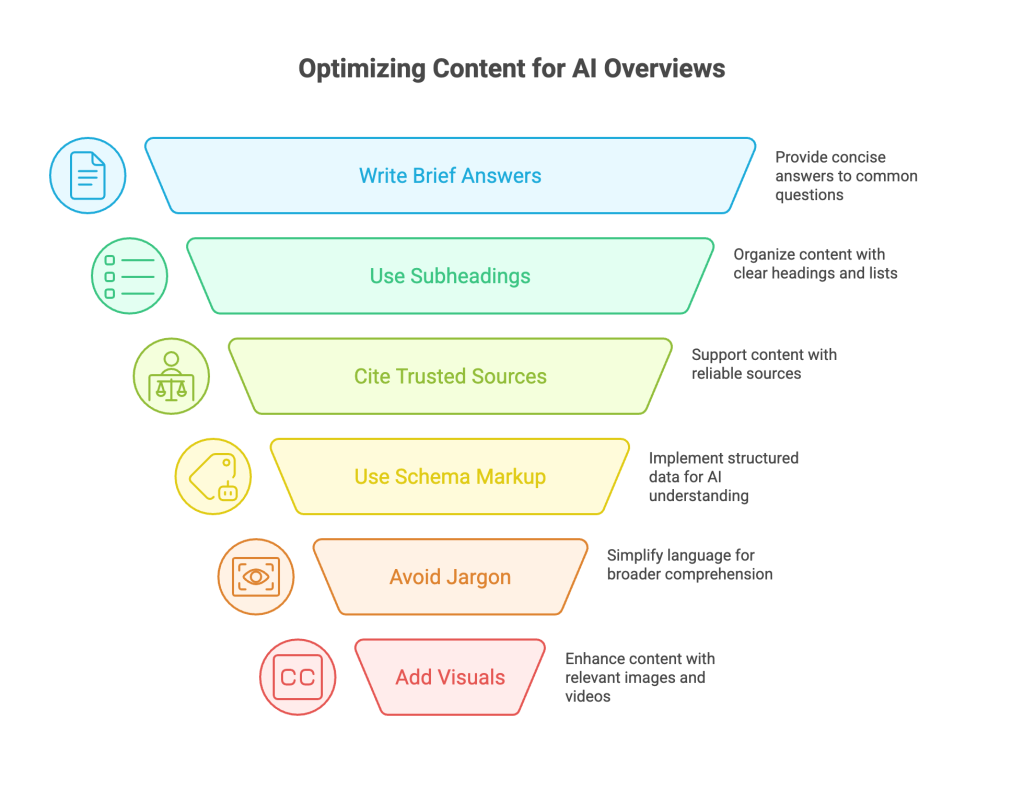
Use Subheadings and Lists Correctly
Everyone, including AI tools, web crawlers, and users, agrees that simple and clear formats are the best. This means writing in short paragraphs (just 1 or 2 sentences), using headings, and often using lists to make the content easier to read.
Use H1 for the main title, H2 for section titles, and H3 for smaller headings. Your H1 should be the title of your post, and it should include your main keyword. H2 headings are for the main topics. H3 headings give more details about those main topics, and this pattern continues.
Here’s an example:
H1: How to Outsource SEO? Tips to Find the Right SEO Agency in 2025
H2: What is SEO Outsourcing?
H2: Factors to Check While Outsourcing SEO
H3: Niche Knowledge
H3: Communication
H3: Testimonials
H2: Conclusion: Understanding SEO Outsourcing
Cite Trusted Sources
Keep in mind that generative AI tools prefer that you support your statements with trustworthy online sources. Whenever you can, look for information on .edu and .gov websites because they are the most reliable.
This doesn’t mean you can’t use a .com website as a source; you just need to make sure it’s reliable. We suggest looking at a website’s backlinks to make sure it’s a trusted source.
Use Schema Markup
Structured data is a common way to organize information on a webpage, like product details and reviews, and to share information about the page itself. Schema is important for AI tools and web crawlers because it helps them understand content more easily.
For example, organized data about reviews helps an AI tool quickly understand that the content is discussing a product or service. Schema helps your brand get more visibility in AI summaries, GAI answers, and search engine results like snippets.
Don’t Use Jargons
Using complicated industry terms can put off potential customers and also confuse AI tools. Because of this, you should always choose simple words instead of complicated ones.
This will make it easier for people to read your content and help AI tools get information from your site. When you write or check content for your website, think about this: “Would a regular person understand what this means, or is it too technical?”
Add Visuals
Next, GAI tools also like pictures and videos, just like people do. Try to add pictures, clear images, and charts whenever you can, as long as they are useful. These images will:
- Make your content easier to understand
- Increase your chances of being included in GAI responses
- Get shares from the people you want to reach
- Boost how easily users can find your content online
Answering Several Related Questions in a Single Post
Finally, try to answer as many related questions as possible in one post. Why is that so? This is because answering questions is an important part of GAI search. Usually, people mainly ask tools like Perplexity and ChatGPT questions.
The more questions you answer in your content, the more chances you’ll have to be included in AI summaries. Add a FAQ section to all your articles. Make sure each question uses related keywords.
Also Read: AI SEO Agency: Growing Your Online Reach
AI Overviews Optimization Mistakes to Avoid
Dense Paragraphs and Keyword Stuffing
One big mistake in optimizing generative search is using long, cluttered paragraphs that have too many keywords. This method, which was once used to trick regular SEO, now has a negative effect on content in AI-driven search systems.
Generative AI tools are designed to understand everyday language and make things easy to read. When content is difficult to read quickly, has too little space between sections, or repeats words awkwardly, it suggests poor quality and makes the experience worse for users.
Keyword stuffing makes it hard to understand the information and can cause AI to ignore the content or get it wrong in summaries. Instead, pay attention to being clear, organized, and using everyday language.
Use keywords wisely in the right places, instead of cramming them into every paragraph. AI models prefer clear and easy-to-read content that sounds like how people normally talk and search.
Not Using Reliable Citations
Not citing trustworthy sources is a common mistake when trying to optimize for AI search tools that create content. AI models are taught to check if the information is true and trustworthy, especially for important topics.
If your content doesn’t have references or includes links to unreliable sources, it lowers trust for both readers and AI systems. Generative tools usually focus on content that comes from reliable and current sources, like .edu websites, .gov sites, and well-known publications.
If you don’t use trustworthy sources, it’s less likely that your content will be used for AI answers or shown in search results. Also, citations help people check the information and find out more, making your content more credible and valuable.
Keeping Answers Hidden
Another big mistake is hiding the important answers far down in your content. Generative AI and search tools focus on finding information that gives fast, clear, and straightforward answers.
If your important information is buried under too much introduction or details that don’t matter, AI tools might skip over your content and choose shorter, clearer options instead. Today’s search results favor content that provides helpful information right away, like highlighted answers or summaries in the first paragraph.
Both users and AI value quick responses. So, arrange your content like an upside-down triangle: start with the most important information first, then add more details. Don’t hide helpful information behind paywalls, pop-ups, or unclear words.
To do well in search environments, make your answers easy to find, quick to read, and simple to understand. Hidden answers can annoy readers and make it harder for people to find your content in AI-generated summaries and search results.
Too Much Schema Markup Optimization
Using schema markup can help crawlers understand content better, but making it too complicated is a common mistake. Using too many or unrelated schemas can confuse search engines and AI tools, making visibility worse.
Some website owners try to use all the different types of schema, like FAQ, Product, Organization, and Review, hoping it will improve their search rankings. But using it too much or the wrong way can result in fines or not being noticed.
A schema should make things clearer, not clutter the data with extra information. Generative AI models focus on making the content clear and helpful rather than using fancy technical details.
Instead of filling your pages with a lot of structured data, use schema carefully and only where it truly helps to give more information. For example, highlight questions and answers in FAQs, or point out articles that have the right author and date information.
Ignoring User Intent
Another mistake is not paying attention to what the user wants and the situation they are in when searching. Generative AI tools try to understand not just the specific words in a question, but also what the person really wants, whether they want to learn, compare things, solve a problem, or do something.
Making content that doesn’t meet these needs can result in bad results, even if it’s well-written or properly set up. For instance, if you try to answer a “how-to” question with unclear product details or use complicated language for readers, it won’t be helpful.
Good content understands what the user wants to do and helps them achieve that in a clear and easy way. To make the most of generative AI, adjust the way you organize your content, the style you use, and how much detail you include based on what people are asking for.
Wrapping Up
In a world where more and more content is created by AI, making your content better is more than just using traditional SEO methods. To be successful now, you need to create content that is trustworthy, easy to understand, and matches what users are looking for.
By giving clear and short answers, using trustworthy information, and improving technical skills, every part helps you be more noticeable on AI-based platforms. Making mistakes like adding too many keywords, hiding important information, or not following schema rules can reduce how many people see your content, even if what you say is true.
On the other hand, putting users first, using different formats, and being clear helps AI tools understand and find your content more easily. The important thing is to consider both how a user thinks and how a machine works.
This means giving useful information and organizing it so that AI can easily understand and share it. As AI models improve, you also need to update your content plan. By using these methods, you make your content more important and useful in today’s world of advanced search tools.
FAQs
What is generative AI optimization, and how is it different from regular SEO?
Generative AI optimization means making your content easy to understand, summarize, and find using AI tools like ChatGPT, Gemini, or Perplexity. Unlike regular SEO, which mainly looks at keywords, links, and tags, generative AI values clear information, trustworthiness, context, and what the user wants. AI tools create answers by using language models that learn from large amounts of data. They work best with clear and well-organized language that gives straightforward answers.
Why does the author’s trustworthiness matter for ranking in generative AI?
Generative AI tools are being created more and more to show trust, knowledge, and accuracy. Adding clear and trustworthy information about the authors helps show that your content is reliable and indicates to AI that it comes from a knowledgeable source. This is really important for health, money, or science topics because wrong information can be dangerous. Making the author’s background, connections, and experience clear helps make the content more reliable.
How does formatting change how generative AI understands and ranks it?
How content is organized is very important for how generative AI understands and chooses information. Well-organized content with clear headings, bullet points, numbered lists, and short paragraphs helps AI tools find and gather important information more easily. If content is messy or hard to follow, it might be ignored or misunderstood, making it less noticeable in generated responses. AI likes content that sounds like a conversation and is easy to understand, especially in “question-answer” or “how-to” styles.
Can AI tools find and penalize keyword stuffing or manipulation?
Yes, generative AI models are getting better at spotting unnatural language patterns, like using too many keywords. Using the same words too much or in an unnatural way makes the content awkward and suggests that it’s being forced rather than providing real value. AI tools learn from how people talk and write. Because of this, content that is filled with too many keywords sounds unnatural and like spam. Writers should avoid using the same keywords too much.
Should I use schema markup for generative AI, and if yes, how much should I use?
Schema markup is helpful when done right because it helps AI and search engines understand how your content is organized. But if you use too many unnecessary or incorrect schema types on your pages, it can confuse people or be seen as spam. Use markup carefully and only when it really helps, like for FAQs, Articles, Authors, or Products. The aim is to make things clearer, not to change how visible they are.
